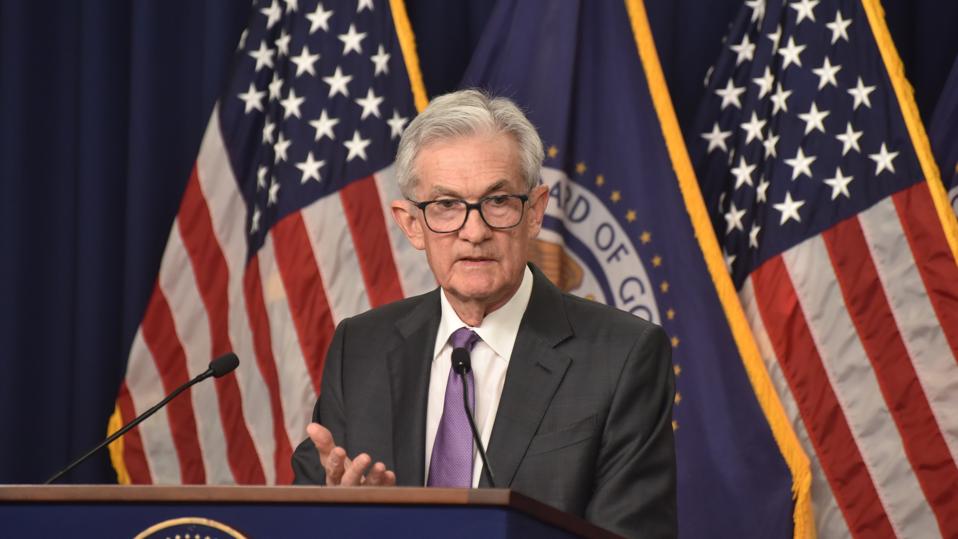Federal Reserve Chair Jerome Powell’s press conference last week, following the latest FOMC meeting, offered some crucial insights that are likely to influence the stock market for the remainder of the year. While these developments suggest a promising market environment through 2024, they raise concerns about persistently higher and possibly re-accelerating inflation.
Rate Cuts On The Table
Despite consecutive months of higher-than-expected inflation prints, Powell maintained a dovish stance, expressing confidence in overcoming inflation challenges. “Our restrictive stance of monetary policy has been putting downward pressure on economic activity and inflation,” he said. “As labor market tightness has eased and progress on inflation has continued, the risks to achieving our employment and inflation goals are moving into better balance.”
This stance indicates that rate cuts are still probable this year, which is a move that investors and market observers have welcomed despite recent disappointing inflation prints. Powell’s dovish approach, despite two consecutive months of high inflation prints, mirrors a similar tone he adopted during his December FOMC press conference when he noted, “Inflation has eased from its highs, and this has come without a significant increase in unemployment.”
The Fed Chair’s dovish stance will likely sustain the positive momentum in stocks, as investors perceive his approach as supportive of the market’s upward trajectory. Interestingly, despite higher rates, housing prices remain largely unaffected, and narrow credit spreads indicate a lack of concern by investors. This resilience in the face of inflationary pressure further reinforces the optimistic outlook for stocks in the coming months.
Tapering Quantitative Tightening
The Fed’s unexpected decision to begin tapering Quantitative Tightening signals a further easing of financial conditions. This move is expected to provide additional support to economic growth and help stabilize interest rates further.
Tapering QT signifies the Fed’s concern about the federal government’s borrowing costs, particularly as Congress faces gridlock in controlling deficits. With an annual spending deficit exceeding 6% of GDP and national debt barreling toward $35 trillion in the coming months, the Fed’s priority appears to be stabilizing or potentially lowering interest rates and borrowing costs overachieving its 2% inflation target.
Stabilizing Interest Rates And Borrowing Costs
The Fed’s decision to leave rate cuts on the table and begin tapering QT indicates a shift in their approach to their 2% inflation target. This signals an implicit recognition of the U.S. entering a period of fiscal dominance, with a focus on stabilizing interest rates and borrowing costs.
This shift in the Fed’s approach reflects concerns about the impact of borrowing costs on federal deficits. The Fed’s emphasis on stabilizing interest rates, even in the face of elevated inflation, suggests a potential re-acceleration of inflation to lower borrowing costs for the federal government and slow deficit growth.
Despite persistently elevated inflation, the Fed’s new focus on stabilizing interest rates and borrowing costs suggests that the massive debt and deficit are fueling inflation and hindering the Fed’s efforts to tighten monetary conditions. This decision aims to lower the federal government’s borrowing costs and slow deficit growth, primarily driven by interest expenses on debt.
Looking Ahead
While these takeaways from Chairman Powell’s press conference may have long-term negative implications for bringing inflation back to target, they are currently viewed as positive for stocks and other risk assets. These developments – including keeping rate cuts on the table, maintaining a dovish tone, and announcing QT tapering – signal a favorable market environment in the coming months.
As the old saying goes, “Don’t fight the Fed,” investors may find it wise to increase their holdings in stocks and other risk assets, considering the favorable winds ahead.
In addition to the three key takeaways discussed above, Powell’s press conference illuminated several other important aspects. These include the Fed’s plans for the future, the current state of the economy, and its stance on financial conditions.
The Fed is discussing slowing the pace of asset runoff, which would reduce the overall size of the Fed’s balance sheet. This is a significant development as it could further ease financial conditions and stabilize interest rates.
Powell noted in his conference that the economy has made considerable progress toward the dual mandate objectives. Although inflation is still too high, the economy has remained strong, which is good news for investors.
The Fed Chair also acknowledged that financial conditions are weighing on economic activity. Clearly, the Fed is aware of the potential challenges that investors and businesses may face due to tighter monetary conditions.

